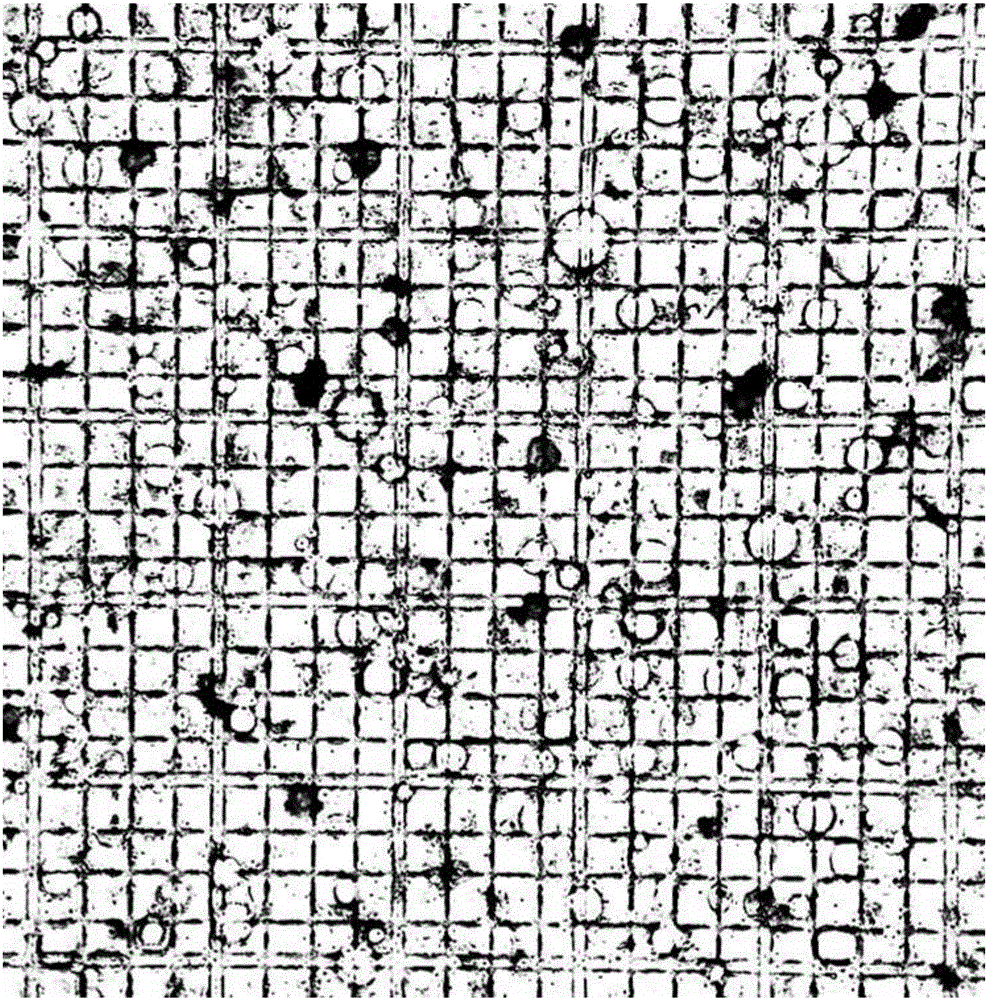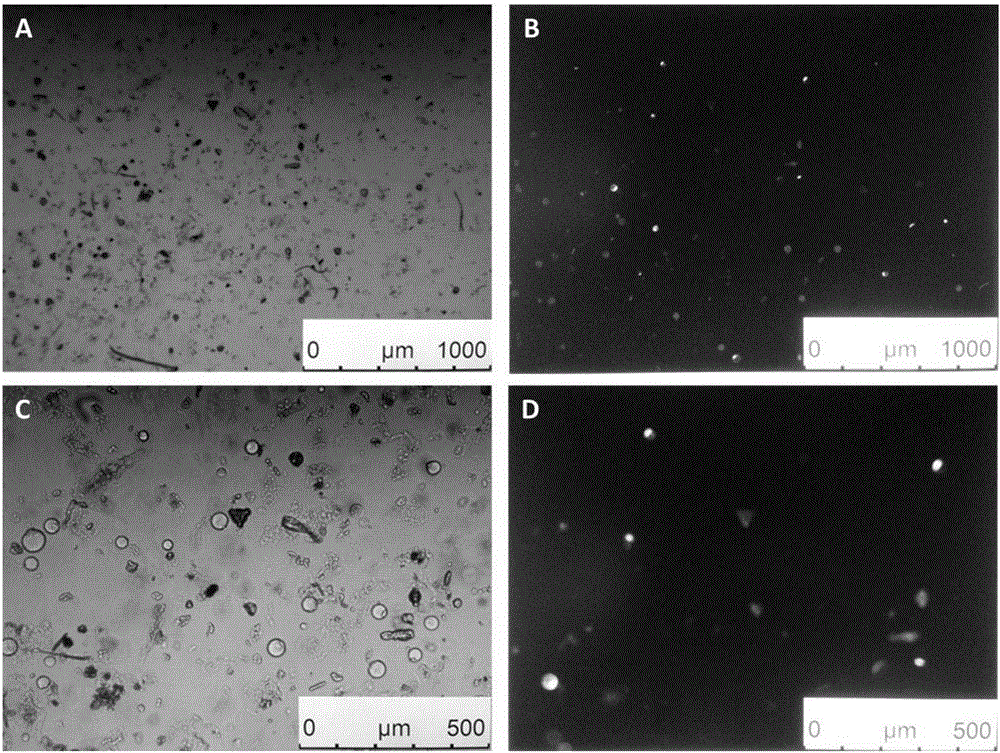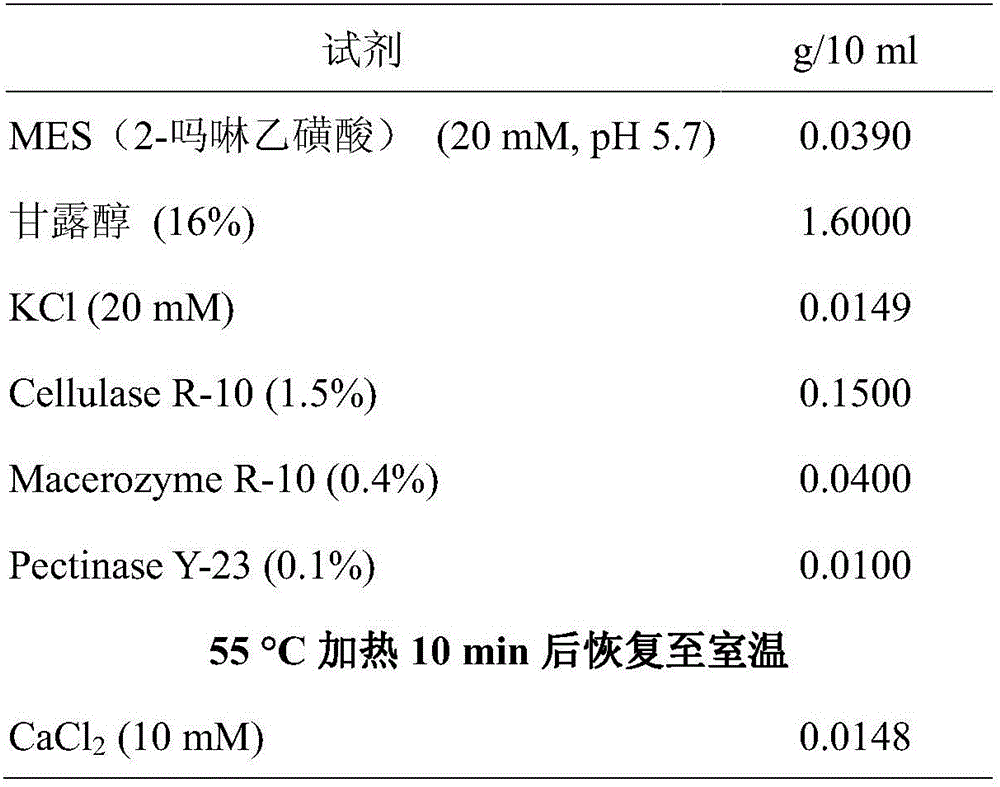Camellia sinensis flower protoplast, preparation method therefor and application thereof
A protoplast and tea tree flower technology, applied in the field of cell biology, can solve the problems of high cellulose content, unclear metabolism and regulation mechanism, no model plants, etc., and achieve the effect of simple equipment and materials
- Summary
- Abstract
- Description
- Claims
- Application Information
AI Technical Summary
Problems solved by technology
Method used
Image
Examples
Embodiment 1
[0014] The applicant's research found that compared with other plants, and after certain condition optimization, the protoplasts of Camellia sinensis can obtain good separation effect and exogenous gene expression activity.
[0015] The concrete steps of embodiment are described below:
[0016] a) Separation and purification of tea tree flower protoplast:
[0017] The formula of digestive enzyme solution is shown in Table 1. Among them, Cellulase R-10, Macerozyme R-10, and Pectinase Y-23 were purchased from YaKult, Japan. Other reagents were purchased from Sigma, USA. After adding CaCl 2 Heat treatment at 55°C to remove protease activity before adding CaCl after returning to room temperature 2 . The preparation method is as follows: first add MES0.039g, mannitol 1.6g, KCl0.0149g, cellulase 0.15g, isolated enzyme 0.04g, pectinase 0.01g into water, heat treatment at 55°C for 10min and return to room temperature, then add CaCl 2 0.0148g, and then dilute to 10ml with water ...
PUM
 Login to View More
Login to View More Abstract
Description
Claims
Application Information
 Login to View More
Login to View More - R&D
- Intellectual Property
- Life Sciences
- Materials
- Tech Scout
- Unparalleled Data Quality
- Higher Quality Content
- 60% Fewer Hallucinations
Browse by: Latest US Patents, China's latest patents, Technical Efficacy Thesaurus, Application Domain, Technology Topic, Popular Technical Reports.
© 2025 PatSnap. All rights reserved.Legal|Privacy policy|Modern Slavery Act Transparency Statement|Sitemap|About US| Contact US: help@patsnap.com



